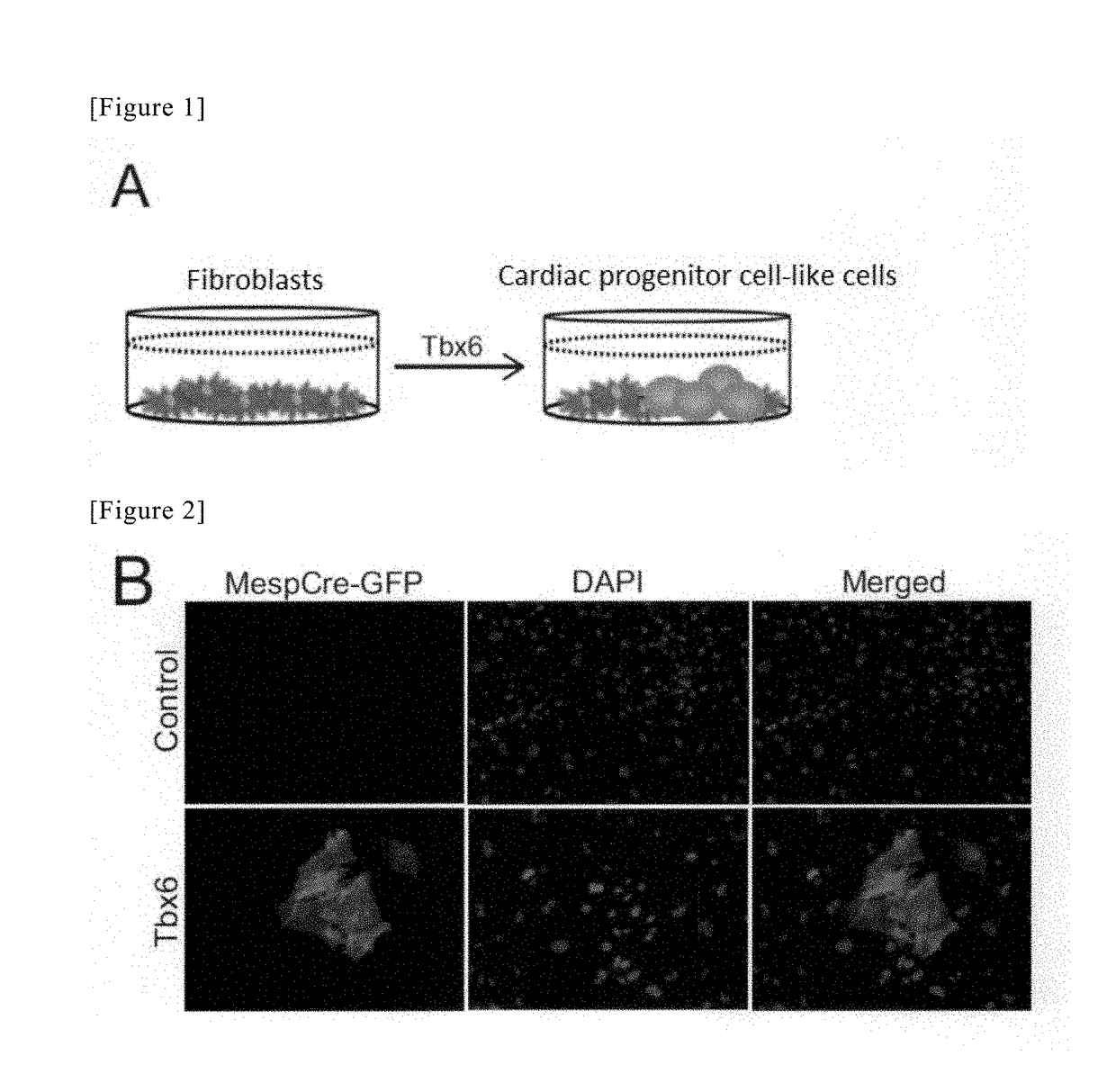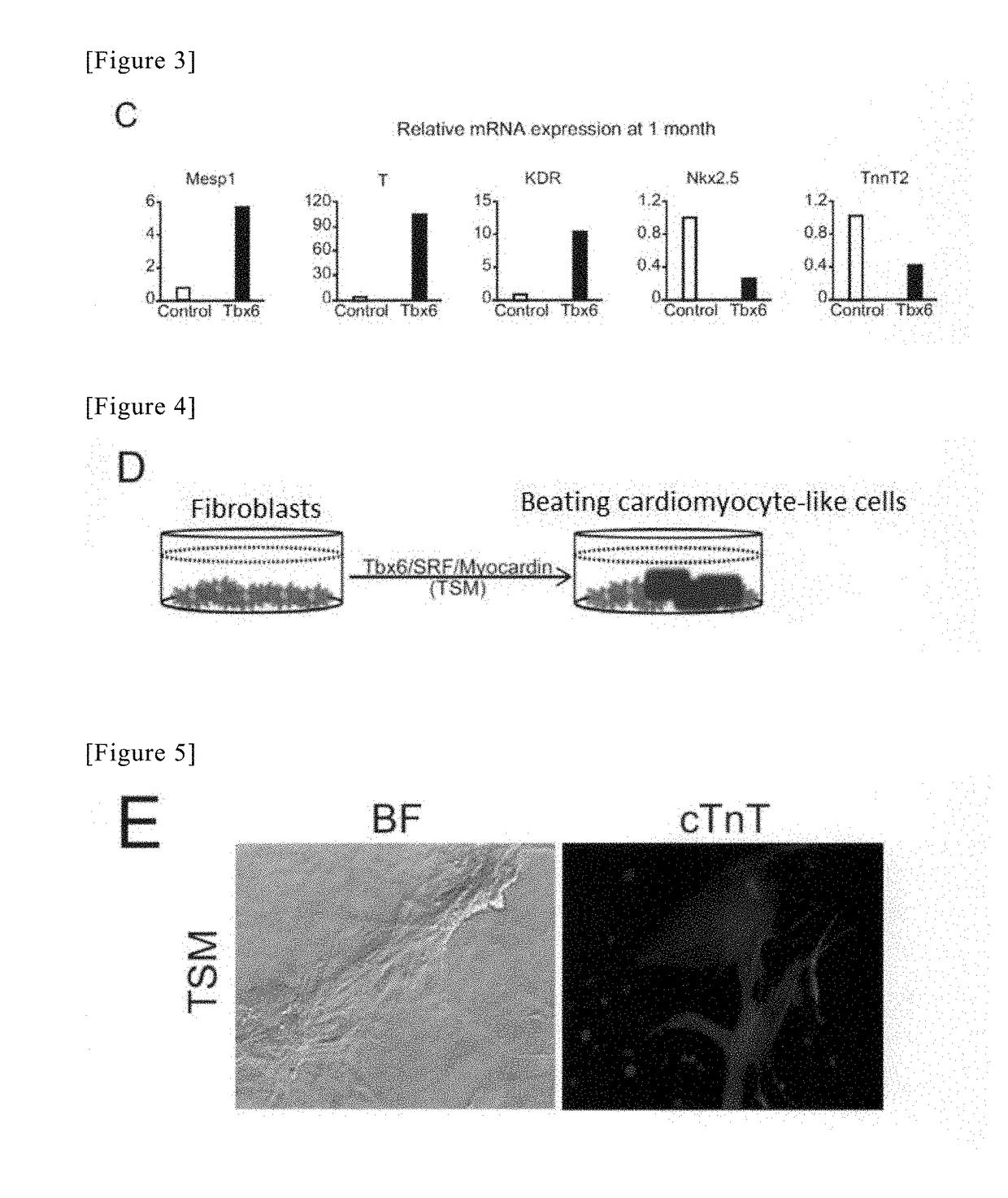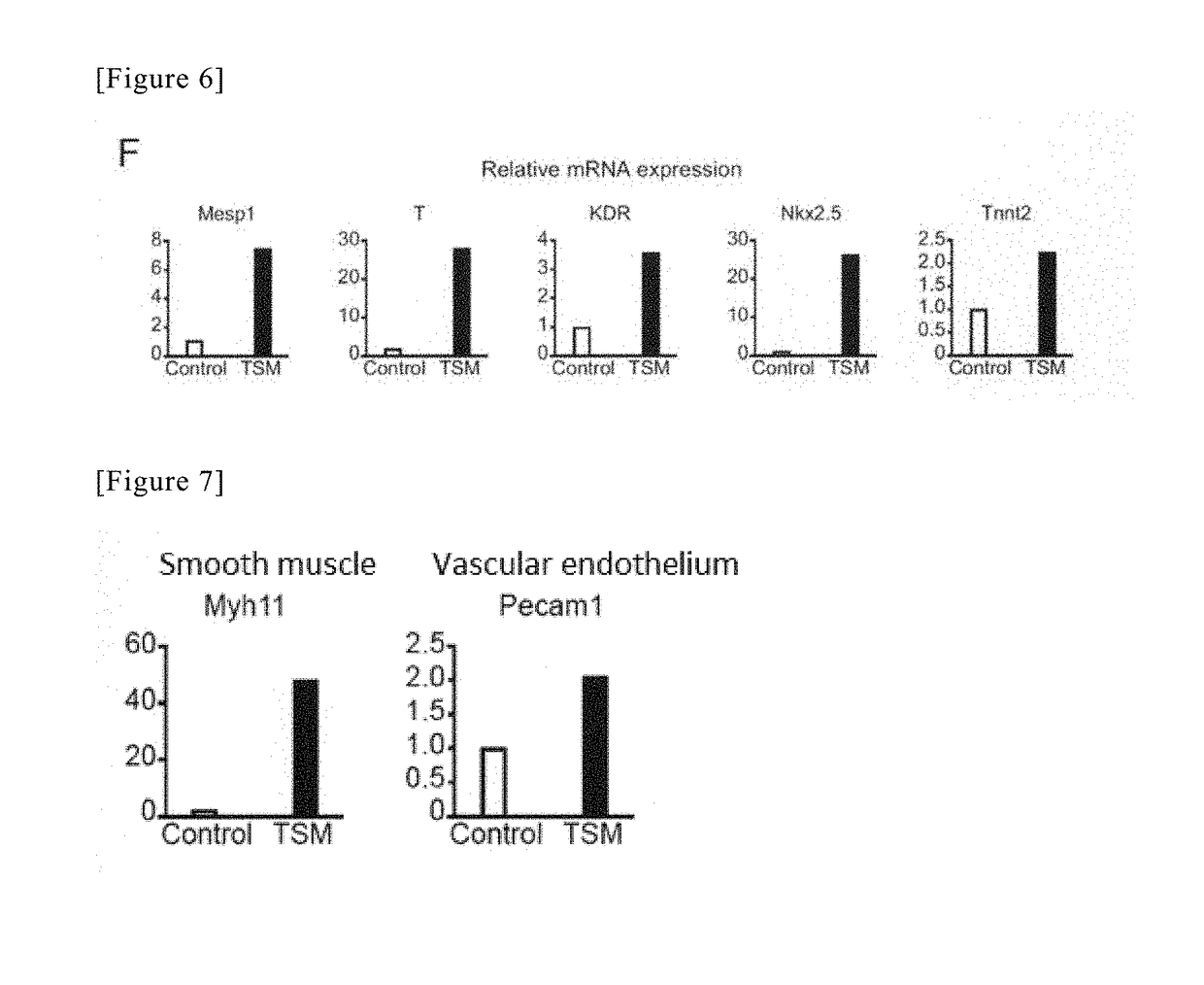Method for directly producing cardiac precursor cell or myocardial cell from fibroblast
a technology of fibroblasts and precursor cells, which is applied in the direction of genetically modified cells, extracellular fluid disorders, skeletal/connective tissue cells, etc., can solve the problems of insufficient number of cells necessary for regenerative therapy, inability to maintain the state of cardiac progenitor cells, and inability to treat heart diseas
- Summary
- Abstract
- Description
- Claims
- Application Information
AI Technical Summary
Benefits of technology
Problems solved by technology
Method used
Image
Examples
example 1
[Example 1] Production of Mouse Embryonic Fibroblasts (MEF)
(1) Production of Mouse Embryonic Fibroblasts (MEF)
[0117]Female ICR mice (CLEA Japan, Inc.) at 7 to 10 weeks after birth were mated with Mesp1-GFP transgenic mice (male) (Development 126, 3437-3447 (1999), “MesP1 is expressed in the heart precursor cells and required for the formation of a single heart tube”). The day on which fertilization was confirmed was defined as Day 0 of pregnancy, and on Day 12 after confirmation of the pregnancy, embryos were excised from the pregnant ICR mice. Then, the heart was excised from each embryo, and the excised heart was then imaged with fluorescence under an inverted microscope (IX71, Olympus). Thereafter, embryos emitting GFP fluorescence were selected.
[0118]From the selected embryos, four limbs, and solid organs such as ½ to ⅔ of head portion, lung, liver, kidney and intestinal tract were excised. The tissues of the remaining trunk of the body were washed with PBS (phosphate buffered s...
example 2
[Example 2] Production of Induced Cardiac Progenitor Cells and Cell Culture
[0122]Plat-E packaging cells were inoculated at a concentration of 3.6×106 cells in a gelatin-coated 10-cm dish for tissue culture (172958, Thermo Scientific), and were then left at rest under conditions of 37° C. / 5% CO2 (Day 1).
[0123]On the following day (Day 2), 27 μL of FuGENE 6 Transfection Reagent (E2691, Promega) was mixed into 300 μL of Opti-MEM (31985-070, Gibco). After the mixed solution had been left at rest for 5 minutes, 9000 ng of a retrovirus plasmid of pMx-Tbx6 (see Cell 142, 375-386, Aug. 6, 2010, “Direct Reprogramming of Fibroblasts into Functional Cardiomyocytes by Defined Factors”) was added to the mixed solution, followed by strong tapping, and thereafter, the obtained mixture was left at rest at room temperature for 15 minutes. The thus obtained solution was added dropwise to the Plat-E cells as a whole that had been prepared on the previous day (Day 1), and the dish was then left at rest...
example 3
[Example 3] Production of Induced Cardiomyocytes Using Tbx6, SRF and Myocd, and Cell Culture
(1) Method of Introducing Tbx6, SRF and Myocd Genes, Using Retrovirus
[0129]A virus solution was produced in the same manner as “Production of induced cardiac progenitor cells” of Example 2. In the present example, however, three genes were introduced into the cells. On Day 1, Plat-E cells were prepared in three 10-cm dishes for tissue culture by the same method as that applied in Example 2. On Day 2, 27 μL of FuGENE 6 Transfection Reagent (E2691, Promega) was mixed into 300 μL Opti-MEM (31985-070, Gibco). After the mixed solution had been left at rest for 5 minutes, 9000 ng of a retrovirus plasmid of each of pMx-Tbx6, pMx-SRF, and pMx-Myocd (see Cell 142, 375-386, Aug. 6, 2010, “Direct Reprogramming of Fibroblasts into Functional Cardiomyocytes by Defined Factors” with respect to their production technique) was added to the mixed solution, followed by strong tapping, and thereafter, the obtai...
PUM
| Property | Measurement | Unit |
|---|---|---|
| time | aaaaa | aaaaa |
| time | aaaaa | aaaaa |
| temperature | aaaaa | aaaaa |
Abstract
Description
Claims
Application Information
 Login to View More
Login to View More - R&D
- Intellectual Property
- Life Sciences
- Materials
- Tech Scout
- Unparalleled Data Quality
- Higher Quality Content
- 60% Fewer Hallucinations
Browse by: Latest US Patents, China's latest patents, Technical Efficacy Thesaurus, Application Domain, Technology Topic, Popular Technical Reports.
© 2025 PatSnap. All rights reserved.Legal|Privacy policy|Modern Slavery Act Transparency Statement|Sitemap|About US| Contact US: help@patsnap.com



